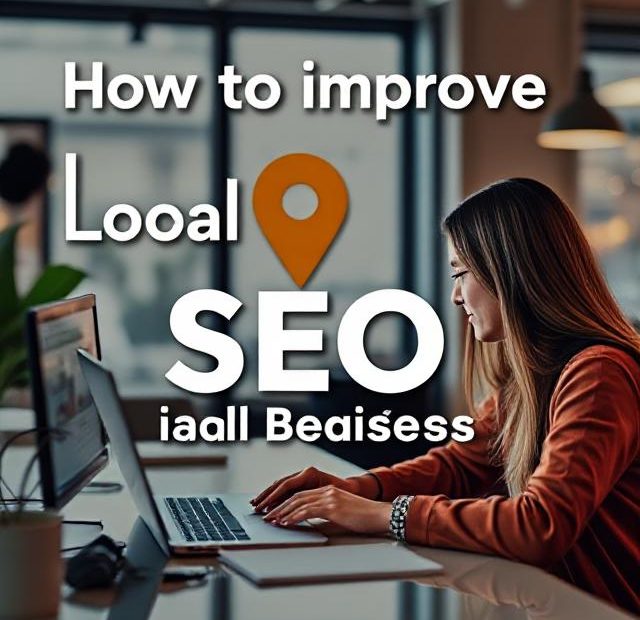In today’s digital age, consumers often begin their search for local products or services online. Whether it’s finding a nearby coffee shop, plumber, or yoga studio, people use search engines—especially Google—to discover local businesses. That’s where Local SEO comes into play.
For small businesses, improving Local SEO isn’t just a luxury—it’s a necessity to stay competitive in a crowded market. Done right, it can drive more foot traffic, phone calls, and online inquiries, all from customers right in your neighborhood.
Here’s an in-depth guide on how to improve local SEO for small businesses and climb higher in local search results.
What is Local SEO?
Local SEO (Search Engine Optimization) is the process of optimizing your online presence so that your business shows up in local search results. This includes appearing in Google’s Local Pack (the map + 3 listings you see in search), Google Maps, and organic local search queries like:
-
“Coffee shop near me”
-
“Best chiropractor in Miami”
-
“Affordable plumber in Brooklyn”
Improving your local SEO ensures that people in your area can find you easily, right when they need you most.
Why Local SEO Matters for Small Businesses
-
High intent traffic: Local searches often come from people ready to buy or visit.
-
Mobile use is rising: 78% of mobile local searches lead to offline purchases.
-
Level playing field: Smaller businesses can compete with larger chains in local results.
Local SEO Checklist: How to Improve Your Rankings
1. Claim and Optimize Your Google Business Profile
Your Google Business Profile (formerly Google My Business) is the most crucial factor in local SEO.
Steps:
-
Claim your profile at google.com/business
-
Add accurate NAP (Name, Address, Phone)
-
Choose the correct categories
-
Upload high-quality photos
-
Add business hours and website URL
-
Use keywords naturally in your business description
Keep the profile updated and encourage customer reviews regularly.
2. Ensure NAP Consistency Across the Web
Google uses your business info from various sources to validate your legitimacy. Make sure your Name, Address, and Phone number (NAP) are identical everywhere.
Places to check:
-
Your website
-
Social media profiles
-
Business directories (Yelp, Bing Places, Apple Maps, etc.)
Inconsistent NAP = Confused search engines = Lower rankings.
3. Create Location-Specific Pages on Your Website
If you serve multiple cities or neighborhoods, create a dedicated landing page for each location.
Each page should include:
-
Unique content (not copy-paste!)
-
Location-specific keywords (e.g., “plumber in Downtown Denver”)
-
Testimonials or reviews from local customers
-
Contact details and directions
This helps Google serve the right page when people search for your services in a specific area.
4. Optimize for Local Keywords
Use tools like Google Keyword Planner, Ubersuggest, or Ahrefs to find the keywords locals are searching for.
Examples:
-
“Best taco truck in Austin”
-
“Emergency electrician Brooklyn 24/7”
-
“Pet grooming near Central Park”
Use these keywords naturally in:
-
Page titles
-
Meta descriptions
-
Headers (H1, H2)
-
Website content
-
Image alt tags
Avoid keyword stuffing—write for people first, then search engines.
5. Encourage and Manage Online Reviews
Positive reviews boost your local SEO ranking and build trust with new customers.
How to get more:
-
Ask happy customers in person
-
Send follow-up emails with a review link
-
Offer incentives (discounts, freebies, etc.)
Important: Always respond to reviews, good or bad. A respectful response to a negative review shows professionalism and helps build credibility.
6. Use Local Schema Markup
Schema markup is a type of structured data that helps search engines better understand your business details.
Use local business schema to highlight:
-
Business name
-
Address and phone
-
Hours of operation
-
Services
-
Reviews
This can enhance your search listings with rich snippets like star ratings and open hours, making your result more clickable.
You can generate schema code using tools like Google’s Structured Data Markup Helper.
7. Get Listed on Online Directories (Citations)
Citations are online mentions of your business details on sites like:
-
Yelp
-
Yellow Pages
-
Bing Places
-
Foursquare
-
Local Chamber of Commerce websites
The more quality citations your business has, the more trust Google places in your listing. But remember: quality beats quantity. Stick to well-known and relevant directories.
8. Build Local Backlinks
A backlink from a local source signals to Google that your business is a trusted part of the community.
Ways to get them:
-
Partner with local bloggers or news outlets
-
Sponsor a local event or charity
-
Get listed in local business associations
-
Write guest posts for local websites
Every high-quality local backlink gives your site more SEO juice.
9. Use Social Media to Boost Local Presence
Social media isn’t a direct ranking factor, but engaging local audiences on platforms like Facebook, Instagram, and Nextdoor helps:
-
Build brand awareness
-
Drive website traffic
-
Attract reviews and shares
Tag your location in posts, interact with locals, and post consistently about community events, promotions, or news.
10. Optimize for Mobile
Most local searches happen on mobile devices. If your site isn’t mobile-friendly, you’re losing business.
Ensure:
-
Fast page load times
-
Easy navigation
-
Click-to-call buttons
-
Readable fonts and clear CTAs
You can test your site with Google’s Mobile-Friendly Test.
Final Thoughts
Improving your local SEO is one of the best marketing strategies for small businesses in 2025. It helps you reach real customers in your area, grow your online visibility, and build lasting trust.
By claiming your Google profile, managing reviews, using the right keywords, and staying consistent across platforms, you set your business up for local success.
Start small, be consistent, and stay committed—soon enough, your business will start climbing those local search rankings.
